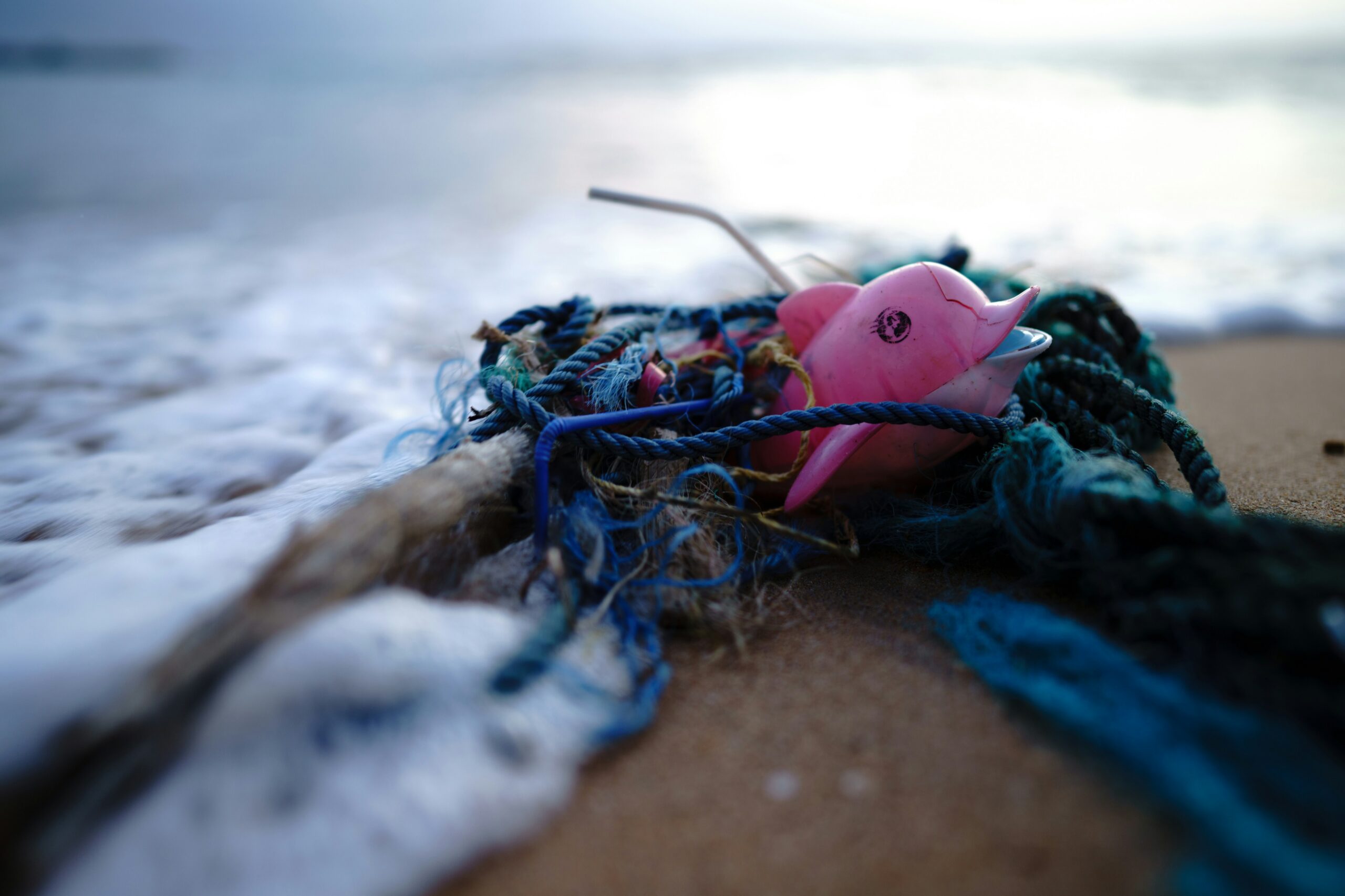Photo by Soren Funk
Scientists have analysed 10,000 marine animal autopsies to understand how plastic ingestion leads to death, revealing the surprisingly small amounts needed to kill wildlife.
The study found seabirds face extreme risk after swallowing just 23 pieces of plastic, giving them a 90% chance of dying. Marine mammals reach similar danger at 29 pieces, whilst sea turtles need to ingest around 405 pieces to hit the same threshold.
The researchers were surprised by how little plastic can be dangerous – less than a football’s worth of soft plastic by volume can be fatal to a dolphin, whilst a seabird might die from ingesting a few pieces of rubber smaller than the size of a pea.
Lead author Dr Erin Murphy, Ocean Conservancy’s manager of ocean plastics research, said: “We’ve long known that ocean creatures of all shapes and sizes are eating plastics; what we set out to understand was how much is too much. The lethal dose varies based on the species, the animal’s size, the type of plastic it’s consuming, and other factors, but overall it’s much smaller than you might think, which is troubling when you consider that more than a garbage truck’s worth of plastics enters the ocean every minute.”
The study reveals that consuming less than three sugar cubes’ worth of plastic for seabirds like Atlantic puffins, just over two baseballs’ worth for sea turtles like loggerheads, and about a football’s worth for marine mammals like harbour porpoises results in a 90% likelihood of death. At the 50% mortality threshold, consuming less than one sugar cube’s worth of plastic kills one in two Atlantic puffins, less than half a baseball’s worth kills one in two loggerhead turtles, and less than a sixth of a football kills one in two harbour porpoises.
Ocean Conservancy scientists analysed 10,412 necropsies conducted worldwide where cause of death and plastic ingestion data were known. The dataset included 1,537 seabirds representing 57 species, 1,306 sea turtles representing all seven species, and 7,569 marine mammals across 31 species.
Nearly half of the sea turtles studied, a third of the seabirds and one in ten of the marine mammals had eaten plastic. Overall, one in five of the animals recorded had ingested plastics, often of varying types.
The researchers found that the type of plastic matters: rubber is most dangerous for seabirds; soft plastics and fishing debris pose the greatest risk to marine mammals; and both hard and soft plastics threaten turtles.
Of seabirds that ate plastic, 92% consumed hard plastics, with just six pieces of rubber each smaller than a pea proving 90% likely to cause death. Of sea turtles that ate plastic, 69% consumed soft varieties. Of marine mammals that ate plastic, 72% consumed fishing debris.
Dr Britta Baechler, Ocean Conservancy’s director of ocean plastics research and study co-author, said: “This study reminds us that plastic bags, lost fishing gear, and other larger items can be dangerous to animals big and small. One in 20 sea turtles that we studied died from ingesting plastics. I wouldn’t take those odds.”
The study found that nearly half of the individual animals who had ingested plastics are red-listed as threatened – that is, near-threatened, vulnerable, endangered or critically endangered – by the IUCN.
Nicholas Mallos, vice president of Ocean Conservancy’s Ending Ocean Plastics programme and a study co-author, said: “This research really drives home how ocean plastics are an existential threat to the diversity of life on our planet. Eating plastics is just one way that marine life is threatened by the plastic pollution crisis. Imagine the dangers when you also consider entanglement and the everpresent threat of toxic chemicals leaching from plastics.”
The study examined only plastics found inside the stomachs of animals. It did not assess chemical impacts or entanglement, meaning the true scale of harm is likely to be higher.
Hundreds of marine species have been found with plastic in their bodies. Birds often swallow plastic fragments, and turtles mistake plastic bags for jellyfish.
Scientists estimate that more than 11 million metric tonnes of plastic enter the ocean every year. Much of this consists of single-use items like those commonly found during Ocean Conservancy’s annual International Coastal Cleanup. Since 1986, more than 19 million volunteers have removed over 400 million pounds of rubbish from beaches and waterways worldwide.
Allison Schutes, Ocean Conservancy’s senior director of conservation cleanups, said: “Every year, volunteers collect massive numbers of balloons, plastic bags, straws, food wrappers, and other items that are lethal to wildlife even in small amounts, according to this research. When you pick up just a few pieces of plastic, you are helping to protect the life of a marine animal. And when we all clean up together, we are helping to protect countless lives.”
Dr Murphy added: “To effectively address plastic pollution, the science is clear. We need to reduce the amount of plastic we produce, improve collection and recycling, and clean up what’s already out there.”
Dr Chelsea Rochman, associate professor in the Department of Ecology and Evolutionary Biology at the University of Toronto and senior author of the study, said: “Governments around the world are grappling with how to address plastic pollution, and they are looking for science-based targets to inform policy decisions. This research provides an important foundation for decision-makers to understand thresholds for risk to better protect biodiversity.”
The research is published in Proceedings of the National Academy of Sciences.
